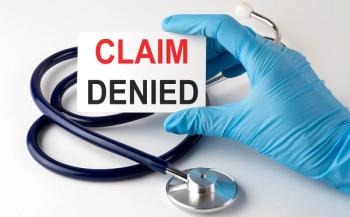
Lost in translation: The physician-caregiver relationship
Physicians and non-professional family caregivers are in it together. Both groups are aligned in the effort to provide high-quality, compassionate care to older adults. But too often the reality is we are not.
Editor’s Note:
Lisa Price, MDPhysicians and non-professional family caregivers
So where does the breakdown occur, and
The issue is often two-fold:
- Caregivers are exhausted from essentially working two jobs; and
- Physicians may not recognize the need to include caregivers in treatment plans.
Family caregivers are under enormous pressures when providing care to an elderly friend or loved one. They face a significant personal burden, both time-wise and financially, in their role as caregivers.
Consider that 74% of workers at some point during their career provide care to a loved one, according to “Understanding the Impact of Family Caregiving on Work” published by AARP. In the U.S. alone, 65.7 million people provide care to an older adult, according to a 2015 National Alliance for Caregiving report.
Caregivers get little downtime for themselves because they spend, on average, 20 hours a week providing care for a loved one in addition to their regular job, according to Caregiving in the U.S. 2015. Being a caregiver is a second, unpaid job for which many caregivers are under-qualified, causing stress and anxiety.
Approximately 18% of caregivers say they are “highly strained” financially because of their caregiving responsibilities, the Caregiving study found. Many are the sole caregiver for a loved one: 1 in 3 have no help at all, paid or unpaid, the report found.
Balancing Act
To make an impact on care, physicians must acknowledge and plan for the daily challenges caregivers face when communicating the older adult’s care plan to the caregiver. There may be times when the caregiver is too stressed or overloaded to fully understand or participate in the care or treatment plans.
A 2001 study in The American Journal of Medicine found physicians and caregivers are generally in agreement when it comes to the “day-to-day” management of the older adult, ranging from emotional health to safety. Unfortunately seeing eye-to-eye didn’t find its way to treatment options: “Agreement on treatment goals between family caregivers and physicians for patients at the study site was low. These results suggest that encounters between family caregiver and physician may need improvement."
Not surprisingly, when caregivers approve of treatment options prescribed by the physician, the older adult is more likely to observe the treatment plan.
- “…agreeing with recommendations can promote adherence and that adherence can promote (healthcare) goal attainment,” according to a 2004 study published in the Journal of the American Geriatrics Society.
Finding this middle ground can be less problematic when working with the designated caregiver of a patient with dementia, particularly when the person is in attendance with the patient.
Physicians may not be aware of the informal caregivers, how much they contribute to supporting the patient, and must be cautious when sharing treatment and condition information without the consent of the patient. Once consent is granted, a delicate balance must be established by the physician to ensure all parties have the same information with the elderly patient receiving those details before the caregiver, as appropriate.
If careful attention isn’t paid to messaging, “…there is a risk that communication about care will shift prematurely to the caregiver, even though the patient is capable of making decisions,” according to the Journal of General Internal Medicine.
Frequent and transparent conversations with the caregiver and elderly patient are crucial to achieving a positive outcome for all involved. Although this communication requires commitment and consistent effort, in my experience, I have found it to benefit everyone involved in the care continuum.
Lisa Price, MD is chief medical officer at Denver-based InnovAge, a provider of health and wellness services for older adults in California, Colorado and New Mexico. Dr. Price was a private practice geriatrician for 11 years, and then attended on the Acute Care of the Elderly (ACE) service and taught Quality Improvement at the University of Colorado. Dr. Price is Board Certified in Internal Medicine and Geriatrics, and has expertise in managed care, electronic health records and quality improvement.
Newsletter
Stay informed and empowered with Medical Economics enewsletter, delivering expert insights, financial strategies, practice management tips and technology trends — tailored for today’s physicians.








